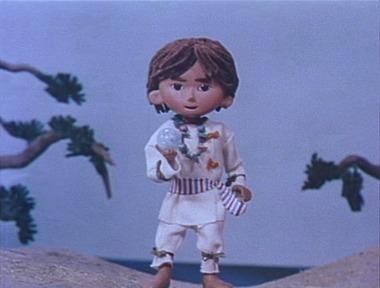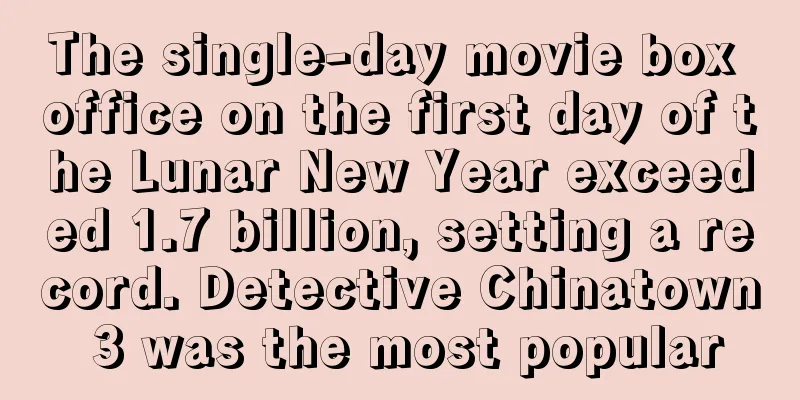My Lifeline: A moving story that depicts the realities of youth

"My Lifeline" - The charm and historical significance of animation from the early Showa periodThe early Showa era animation film "My Lifeline" was released on January 1, 1934, and its historical significance and artistic value are still highly valued today. This work symbolizes Japan's creativity and technical capabilities in the early days of animation, and is an important resource for understanding the social background and cultural influence of the time. This article provides a detailed explanation of the content of "My Lifeline," including the production background, introduction of the director and staff, and subsequent influences. In addition, to convey the appeal of the work, we will analyze specific scenes and characters, and recommend the film to viewers. Overview"My Lifeline" is an animated film produced by Yokohama Cinema Shokai, directed by Kataoka Yoshitaro, illustrated by Murata Yasuji, and written by Sasamoto Kitaro. It is a short film consisting of one episode, and its story is a mix of social satire and humor of the time. The release media is listed as "other," which suggests that it was likely shown at a specific event or screening, rather than at a regular movie theater. Additionally, the original media is listed as "original anime," which means that it was created as a completely new story, rather than being based on an existing manga or novel. Background and historical significanceIn the 1930s, Japan was in a difficult economic situation due to the effects of the Showa Depression. However, at the same time, cultural activities were active, and animation was one of the works that attracted attention. "My Lifeline" was produced against this historical background, and its content reflects the lifestyles and values of people at the time. This work also shows the technological advances being made in early Japanese animation, and had a major influence on later animation works. In particular, director Yoshitaro Kataoka was one of the pioneers of early animation production, and his work occupies an important place in the history of Japanese animation. Animator Yasuji Murata is also known for his drawing style that combined the technology of the time with artistry, and his work is still highly regarded today. Screenwriter Kitaro Sasamoto's storytelling skillfully incorporated humor and social satire, giving the work depth and appeal. Story and CharactersThe story of "My Lifeline" is about the protagonist going on a journey to find his "lifeline." This "lifeline" symbolizes the protagonist's purpose in life and his values, and the story depicts him growing as he overcomes various difficulties and trials. The story has many humorous scenes and skillfully incorporates social satire and customs of the time. The protagonist is portrayed as an ordinary office worker, and his daily life and work-related worries are depicted realistically. The various characters he meets in the story are also unique, each with their own values and way of life. Through his interactions with these characters, the protagonist finds his own "lifeline." Specific scenes and analysisOne particularly memorable scene in the film is when the protagonist visits the "Lifeline Detective Agency" to search for his "lifeline." In this scene, a detective from the agency asks the protagonist various questions, trying to discover his purpose in life and his values. This scene contains a deep message within its humorous exchange, making the viewer think. Another memorable scene is when the main character fails at work and is scolded by his boss. This scene realistically depicts the harsh working conditions and stress of office workers at the time, evoking sympathy from the viewer. Furthermore, the scene where the main character finds his "lifeline" is also moving, visually expressing his growth and change. Director and staff introductionYoshitaro Kataoka, the director of My Lifeline, was one of the pioneers of early animation. He made many films in the 1920s and 1930s and contributed greatly to the development of early Japanese animation. Kataoka's works are not only technically advanced, but also artistic and storytelling, and his influence is still felt in the animation industry today. Yasuji Murata, who was in charge of the drawings, is known for his drawing style that combined the technology of the time with artistry. His drawings are characterized by their realistic depiction with attention to detail and humorous expressions, which enhance the visual appeal. Murata's work has had a great influence on later animation artists. Kitaro Sasamoto, who wrote the screenplay, is known for his storytelling that skillfully incorporates humor and social satire. His scripts contain deep messages that make the viewer think, but also many humorous scenes, giving the work a light-hearted rhythm. Sasamoto's works reflect the social background and culture of the time, and are also highly regarded for their historical value. Influence and Evaluation of the Work"My Lifeline" is highly regarded for its historical significance and artistic value as an animation work from the early Showa period. This work demonstrates the technical advances of early Japanese animation and had a major influence on later animation works. In addition, the content, which reflects the social background and cultural influences of the time, resonated deeply with viewers and was loved by many people. In particular, the story's depiction of the protagonist's growth and change touched viewers' hearts and prompted them to think about their own life goals and values. In addition, the humorous scenes and social satire in the content provided laughter and empathy to viewers, enhancing the work's appeal. These elements were carried over to later animation works and contributed to the development of Japanese pop culture. Recommendation points for viewers"My Lifeline" is an animation work from the early Showa period that can be enjoyed for its historical significance and artistic value. It is especially recommended for those who are interested in the technical advances of early animation and content that reflects the social background of the time. In addition, the story, which incorporates humorous scenes and social satire, provides viewers with laughter and empathy, allowing them to feel a deep message while enjoying the film. Furthermore, the story depicts the protagonist's growth and change, which moves the viewer and gives them an opportunity to think about their own purpose in life and their values. These elements provide the viewer with new perspectives and values, enhancing the appeal of the work. Please watch this work and feel its historical significance and artistic value. Supplementary information and related worksThe production company of "My Lifeline" was Yokohama Cinema Shokai, a company that produced many animation works in the early Showa period. This company contributed to the technical advancement of early animation and contributed to the development of Japanese pop culture. In addition, staff members such as Yoshitaro Kataoka, Yasuji Murata, and Kitaro Sasamoto had a major influence on the animation industry later on. Related works include "Momotaro's Sea Eagle" and "The Cloud and the Tulip," which were also produced in the early Showa period. These works also reflect the technological advances in early animation and the social background of the time, and share a common appeal with "My Lifeline." By watching these works together, viewers can gain a deeper understanding of the appeal and historical significance of animation from the early Showa period. Conclusion"My Lifeline" is highly regarded as an animation work from the early Showa period for its historical significance and artistic value. This work demonstrates the technical advances of early Japanese animation and had a major influence on later animation works. In addition, the content, which reflects the social background and cultural influences of the time, resonated deeply with viewers and was loved by many. Please watch this work and experience its historical significance and artistic value. |
<<: Review of "Tobiiri Chushingura": A surprising and moving story
Recommend
Arcade Gamer Fubuki: A fusion of exhilarating gaming experience and charming characters
Arcade Gamer Fubuki - Crystal of Game Spirit ■ Pu...
Batman 2 postponed to October 2027
James Gunn, co-president of DC Films, said that t...
Hugh Jackman will work out for half a year to play Wolverine again in Deadpool 3
According to Sina Movie, Hugh Jackman has been co...
Looking forward to seeing you in the cinema: A list of Chinese-language films worth watching in 2020 (Part 1)
Since the beginning of 2020, there have been many...
Disney's "Mulan" Japanese version trailer: Japan release date postponed to May
Today (March 3), Disney Japan released a 90-secon...
Junji Ito's live-action special series reveals classic character concept art
Sina Film reported today (October 26) that the li...
The appeal and reviews of Nyankoi!: The harmony of cat ears and youth
Nyankoi! - The charm of a romantic comedy about a...
Review of the movie "Crayon Shin-chan: Storm Called: The Hero of the Golden Spear": A thorough analysis of the emotions and laughs in the 16th film in the series!
Crayon Shin-chan the Movie: The Storm Called the ...
Morita-san is Silent. 2: Exploring the charm of silence and the depth of character
"Morita-san is Silent. 2" - A soothing ...
The Wings of Honneamise: Royal Space Force: A review of the epic story and fascinating characters
"Royal Space Force: The Wings of Honneamise&...
Review of AIR [IN SUMMER] - A moving and tearful story with summer memories
Detailed review and recommendation of AIR [IN SUM...
Noein: Another You: A moving journey through time and space and its reviews
"Noein: Another You": An emotional jour...
LEGO releases Nolan's version of the Batmobile "The Tumbler" model, released on November 1
Recently, LEGO officially launched DC Batman'...
HBO's The Last of Us will be adapted into a second series if it is successful
Naughty Dog director Neil Druckmann recently acce...
"Crayon Shin-chan" new animated film is released, Yamada Takayuki makes a surprise guest appearance as a voice actor
The latest work in the series, the new "Cray...









